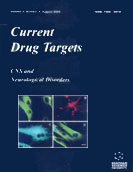Abstract
Anorexia and Bulimia Nervosa are disorders of unknown etiology that invariably begin during adolescence and near in time to puberty in young women. These disorders are associated with aberrant eating behaviors, body image distortions, impulse and mood disturbances, as well as characteristic temperament and personality traits. It is well known that malnutrition produces changes in neuroendocrine function. More recently, disturbances in neuronal systems have been found to play a role in the modulation of feeding, mood, and impulse control. These neuronal systems include neuropeptides (CRH, opioids, neuropeptide-Y (NPY) and peptide YY (PYY), vasopressin and oxytocin, CCK, and leptin) and monoamines (serotonin, dopamine, norepinephrine). Disturbances of most of these neuronal systems have been found when people are ill with an eating disorder, but it was not certain whether they were a cause or consequence of symptoms. In order to address these questions, a growing number of studies have investigated whether neuromodulatory disturbances persist after recovery. Studies from several centers tend to show altered serotonin activity persists after prolonged normalization of weight, nutrition, and menstrual function, as do anxiety, obsessionality, and perfectionism. While there are fewer data, there may be persistent alterations of dopamine or some neuropeptides in some subjects in a recovered state. The inaccessibility of the central nervous system has made it difficult to understand brain and behavior. In the past decade, new tools, such as brain imaging, have offered the possibility of better characterization of complex neuronal function and behavior. Such studies have tended to consistently find that alterations of brain regions, such as the temporal lobe, occur in people who are ill with anorexia nervosa and appear to persist after some degree of weight gain and recovery. New imaging technology, that marries Positron Emission Tomography (PET) imaging with selective neurotransmitter radioligands, confirms that altered serotonin neuronal pathway activity persists after recovery from an eating disorder and supports the possibility that these psychobiological alterations might contribute to traits, such as increased anxiety or extremes of impulse control, that, in turn, may contribute to a vulnerability to the development of an eating disorder. In summary, studies of pathophysiology are starting to nominate new candidates for treatment leading to the possibility of finding effective treatments for this often chronic or fatal disorder.
Keywords: anorexia nervosa, eating disorders, neurotransmitters, monoamines, serotonin, dopamine, neuroimaging, treatment
 26
26

















